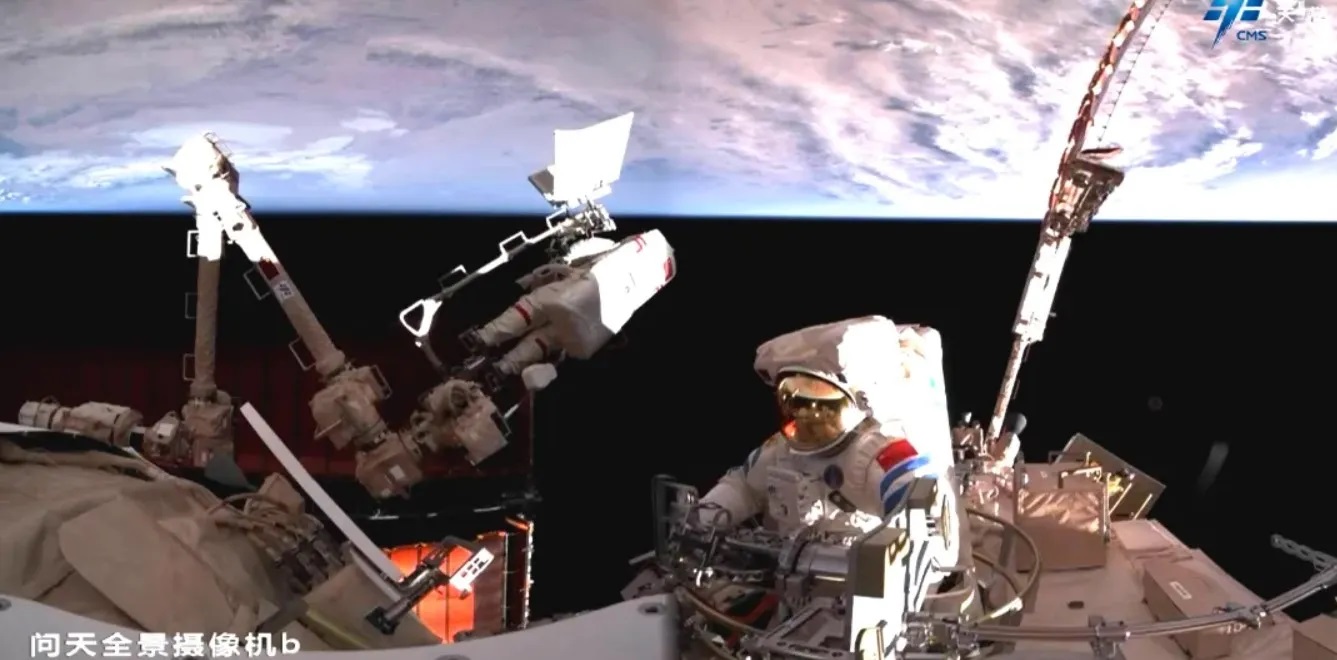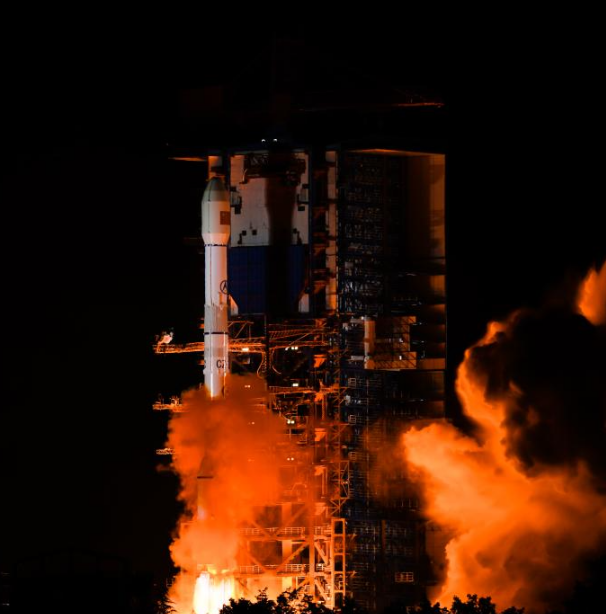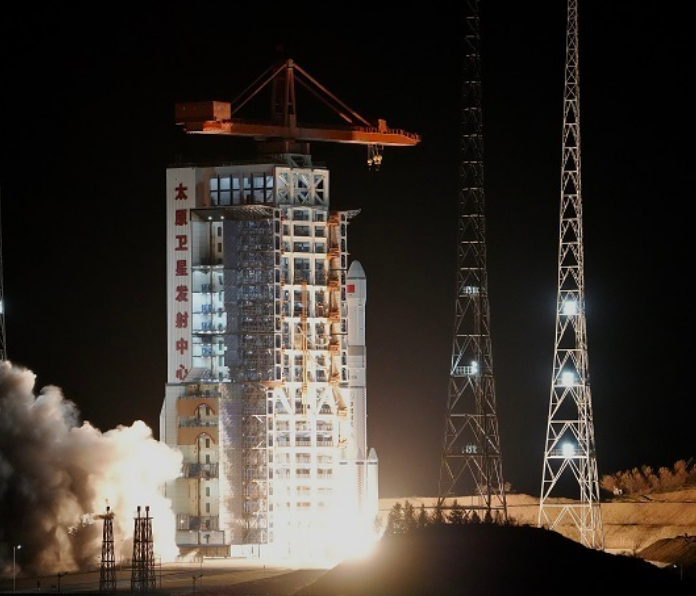18
2024-12
Shenzhou-19 astronauts complete record-breaking 9-hour spacewalk

Astronauts Cai Xuzhe, attached to a robotic arm, and Song Lingdong, exiting the Wentian hatch, during the first Shenzhou-19 extravehicular activity, Dec. 17, 2024. Credit: CMSEO
HELSINKI — Two Chinese astronauts completed a record-setting extravehicular activity outside Tiangong space station Tuesday.
Shenzhou-19 commander Cai Xuzhe, wearing a Feitian extravehicular activity suit marked with red, exited the Wentian experiment module hatch of the Tiangong space station at 11:51 p.m. Eastern, Dec. 16 (0451 UTC, Dec. 17).
Cai attached himself to Tiangong’s robotic arm and retrieved equipment needed for the EVA from the airlock, assisted by crewmate Song Lingdong. Song, in a suit with blue markings, exited Wentian at 1:32 a.m. Dec. 17 (0632 UTC) to perform his tasks, according to China Central Television (CCTV). Signatures from previous users of the spacesuits are visible on the Fetian primary life support systems in video of the spacewalk.
Crewmate Wang Haoze assisted operations from inside Tiangong’s Tianhe module, while the operation also received support from the ground.
Cai Xuzhe and Song Lingdong returned to the Wentian module and closed the hatch at 8:57 a.m. Eastern (1357 UTC), according to China’s human spaceflight agency, CMSEO. The astronauts carried out installation of space debris protection devices, the inspection and handling of external equipment and facilities.
The installation of protective panels was described as to protect cables and pipelines of the thermal control equipment outside the Tianhe module from debris, CCTV reported, citing a researcher from the China Aerospace Science and Technology Corporation (CASC), which built and launched the space station modules. The EVA duration of 9 hours, 6 minutes appears to surpass the previous record for a spacewalk of 8 hours, 56 minutes set by NASA astronauts James Voss and Susan Helms during the STS-102 mission in 2001.
Notably, the China National Space Administration has previously stated that Feitian suits are designed to support a working time of eight hours, while having a service life of three years and can be used 15 times.
CMSEO and Chinese state media Xinhua reported the EVA as a record duration of extravehicular activities by Chinese astronauts.
The spacewalk was the first of the Shenzhou-19 mission. CMSA announced the event would take place “in the near future” Dec. 16. It is the 17th spacewalk outside of Tiangong. China’s first spacewalk took place in 2008 during the Shenzhou-7 mission.
The Shenzhou-19 spacecraft arrived at Tiangong Oct. 29 for a six-month-long stay aboard the space station. It is Cai’s second mission to space, following his participation in the 2022 Shenzhou-14 mission, during which he embarked on an EVA. It is the first mission to space for Song and Wang.
The Tianzhou-8 cargo spacecraft arrived at the orbital outpost Nov. 15 to deliver supplies, fuel and experiments.
Shenzhou-19 is China’s 14th crewed spaceflight mission to date. The crew will conduct a number of extravehicular activities and will carry out 86 science experiments and projects, according to CMSEO. A number of these are related to life sciences, including studying fruit flies in a sub-magnetic facility.
China approved its Tiangong space station plan in 1992. It began building the three-module, T-shaped low Earth orbit outpost in 2021. It was completed in late 2022. CMSEO is preparing to expand Tiangong in the coming years.
-
29
2025-05

Tianwen-2 Mission Launched Successfully
At 1:31 AM today, China successfully launched the Tianwen-2 planetary exploration probe from the Xichang Satellite Launch Center using the Long March-3B Y110 carrier rocket.
-
13
2025-05

Communication Technology Experiment Satellite No. 19 Successfully Launched
At 2:09 on May 13, China successfully launched the Communication Technology Experiment Satellite No. 19 from the Xichang Satellite Launch Center using a Long March 3B carrier rocket. The satellite smoothly entered its predetermined orbit, and the launch mission was a complete success.
-
12
2025-05

Remote Sensing Satellite No. 40, Group 02, Successfully Launched
On May 11 at 21:27, China successfully launched the Remote Sensing Satellite No. 40, Group 02, from the Taiyuan Satellite Launch Center using a Long March 6A carrier rocket. The satellite entered its predetermined orbit smoothly, and the launch mission was a complete success.









